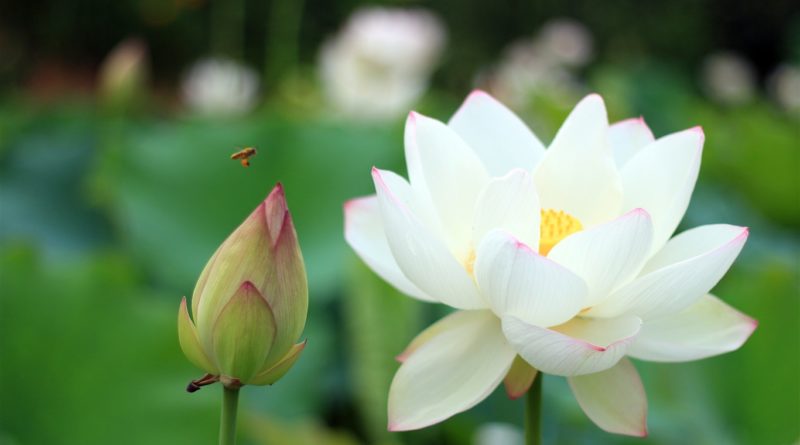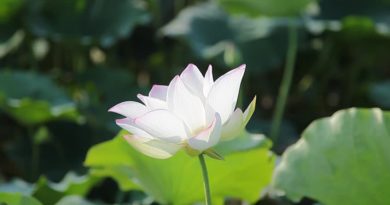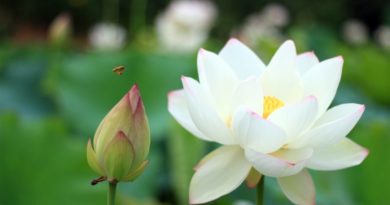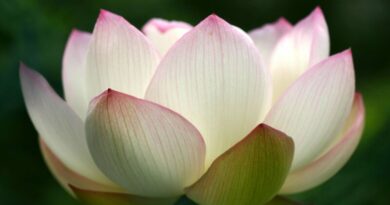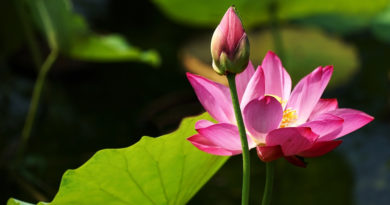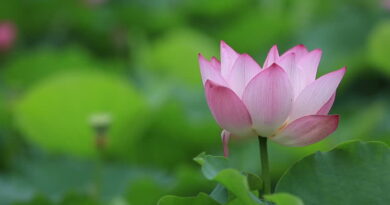BEGINNINGS: THE PALI SUTTAS – PART XI: APPENDIX
BEGINNINGS: THE PALI SUTTAS – PART XI: APPENDIX
At the beginning of the century, when the Buddha’s Teaching had only recently come to widespread notice in the West, many questions were yet unsettled. Although it was already recognized except, perhaps, among those most hostile, that the Buddha was rather more than a primitive sun-myth, yet many other mistaken ideas were being put forward to explain, or to explain away, the Buddha and his Teaching. Some of these notions sound today quite as naive as the sun-myth theory: but others, despite the evidence, continue to be raised, hence the preceding essay. Doctrinal matters aside, the most fundamental of those concern the place of Pali as a language in Indian history and thought, and the dates of composition and compilation of the various Canonical texts.
Prof. T. W. Rhys Davids — unquestionably the most influential of the early scholars concerned with Buddhism — dealt with these questions at length in various articles and books, the most comprehensive and easily available of which is Buddhist India. Published in 1903, although it is touched both by a lingering Victorian ethnocentricism and, doctrinal matters aside, by some lesser judgements since demonstrated to be erroneous, it is nevertheless the earliest general statement of what is, in the main, the accepted view on these questions today.
Although a scholarly examination of these questions will never yield an understanding of the Teaching, yet mistaken notions may well be an obstacle to comprehension. Some, therefore, will find a certain amount of investigation into these points to be of value. While the question of the place of Pali as a language and of the date of the Vinaya have not been part of our inquiry, yet it may be pertinent to quote briefly on these subjects.
On the first point, Rhys Davids concludes that there existed at the time of the Buddha “a language common among the cultured laity … which bore to the local dialect much the same relation as the English of London, in Shakespeare’s time, bore to the various dialects spoken in Somersetshire, Yorkshire, and Essex”; that this “conversational dialect” was in use “not only throughout the Kosala dominions, but east and west from Delhi to Patna, and north and south from Savatthi to Avanti”; and that on this dialect was based “Middle High Indian, Pali, the literary language.”[1]
A scholarly debate has been in progress for the last fifty years (with no end in sight) challenging and defending this judgement. It should be noted, then, that even a “worst-case scenario,” namely, a conclusive and convincing demonstration that Pali was not the language spoken by the Buddha (but see D. 16 (ii,108)), would not require us to change anything in this essay. For if, as some contend, Pali is a western Prakrit while the Buddha spoke an Eastern dialect, all that would be demonstrated is that the final editorial work on the texts was done by monks who hailed from western India. In this regard we should note that the account of the Second Council in the Vinaya repeatedly describes the orthodox monks as being from the west, and the heretics as being from the east. And if, as others contend, Pali as we now have it postdates the Buddha by a century or more, then all that would be demonstrated thereby is that at the Second Council (and, for the Khuddaka, the Third) the decision was made to “modernize” the language.[2] There would be in neither case any need to question the authenticity of the Teaching as we have it.
On the second point we may turn to Rhys David’s History and Literature of Buddhism (the “American Lectures”) of 1896 wherein, early in Lecture VI, he remarks:
… the first disruption in the Order took place … on matters connected with the regulation of the Order itself. One hundred years after the death of the Buddha, according to the oldest account … there arose a certain party in the Order which proclaimed and practised a loosening of the rules in ten particulars …
To put and end to the disputes upon these points, a Council of the leading members of the Order was held at Vesali and the heretical opinions were condemned. The long-continued struggle on the question — as important for the history of Buddhism as the Arian controversy for that of Christianity — agitated the whole Buddhist world to its very center …
Now the ten indulgences are each summed up in a single word: and these words are, each and all of them, conspicuous by their absence from the Books on the laws and regulations of the Order included in the canon (i.e. the Vinaya), except that they appear in an historical account added quite evidently as an appendix (i.e. the Twelfth Khandhaka, discussed in our essay), to the collection of treatises, or Khandhakas … This fact is of the very greatest importance in determining the date at which those Khandhakas must have been composed. The ten points in dispute were all matters of ecclesiastical law. They all related to observances of the Brotherhood. Is it probable that, in a set of rules and treatises which seek to set forth, down to the minutest detail, and even with hair-splitting diffuseness, all that has any relation to the daily life of the Brethren and the regulation of the Buddhist Order — is it probable that, in such a collection, if, when it was compiled, the struggle on these ten points had already burst into flame, there should be no reference at all, even in interpolations, to any one of these ten disputes? That the difference of opinion on each of the ten points remains altogether unnoticed in that part of the rules and treatises where, in the natural order of things, it would obviously be referred to — that the rules are not in any way altered to cover, or to suggest, any decision on the points in dispute, — and that they are mentioned only in an appendix (= the Twelfth Khandhaka), where the Council held to decide them is described, shows clearly that the rules and treatises, as we have them, must have been put together before the time when the Council of Vesali (= the Second Council) was held.
Lastly, on the question which has concerned us at length — the date of the Suttas — we offer relevant excerpts from Chapter X of Buddhist India:
… As to the age of the Buddhist canonical books, the best evidence is the contents of the books themselves — the sort of words they use, the style in which they are composed, the ideas they express. Objection, it is true, has recently been raised against the use of such internal evidence. And the objection is valid if it be urged, not against the general principle of the use of such evidence, but against the wrong use of it. We find, for instance, that Phallus-worship is often mentioned, quite as a matter of course, in the Mahabharata, as if it had always been common everywhere throughout Northern India. In the Nikayas, though they mention all sorts of what the Buddhists regarded as foolish or superstitious forms of worship, this particular kind, Siva-worship under the form of the Linga, is not even once referred to. The Mahabharata mentions the Atharva Veda, and takes it as a matter of course, as if it were an idea generally current, that it was a Veda the fourth Veda. The Nikayas constantly mention the three others, but never the Atharva. Both cases are interesting. But before drawing the conclusion that, therefore the Nikayas, as we have them, are older than the existing text of the Mahabharata, we should want a very much larger number of such cases, all tending the same way, and also the certainty that there were no cases of an opposite tendency that could not otherwise be explained.
On the other hand, suppose a MS. were discovered containing, in the same handwriting, copies of Bacon’s Essays and of Hume’s Essay, with nothing to show when, or by whom, they were written; and that we knew nothing at all otherwise about the matter. Still we should know, with absolute certainty, which was relatively the older of the two; and should be able to determine, within a quite short period, the actual date of each of the two works. The evidence would be irresistible because it would consist of a very large number of minute points of language, of style, and, above all, of ideas expressed, all tending in the same direction.
This is the sort of internal evidence that we have before us in the Pali books. Any one who habitually reads Pali would know at once that the Nikayas are older than the Dhamma Sangani; that both are older than the Katha Vatthu; that all three are older than the Milinda. And the Pali scholars most competent to judge are quite unanimous on the point, and on the general position of the Pali literature in the history of literature in India.
But this sort of evidence can appeal, of course, only to those familiar with the language and with the ideas. To those who are not, the following points may be suggestive:
On the monuments of the third century B.C. we find the names of donors of different parts of the building inscribed on those parts (pillars, rails, and bas-reliefs). When the names are common ones, certain epithets are added, to distinguish the donors from other persons bearing the same name. Such epithets are either local (as we might say, John of Winchester) or they specify an occupation (as we might say, John the carpenter, or John the clerk) or are otherwise distinctive. Among these epithets have been found the following:
- Dhamma-kathika. — “Preacher of the system” (the Dhamma) — the “System” being a technical term in the Buddhist schools to signify the philosophical and ethical doctrine as distinguished from the Vinaya, the Rules of the Order.
- Petakin. –“One who had (that is, knew by heart) the Pitaka.” The Pitaka[3] is the traditional statements of Buddhist doctrine as contained in the Sutta Pitaka (= the five Nikayas). The word means basket, and, as a technical term applied to a part of their literature, it is used exclusively by the Buddhists.
- Suttantika. — “A man who knows a Suttanta (= Sutta) by heart.”
- Suttantakini. — “A woman who knows a Suttanta by heart.” Suttanta is, again, a technical term used exclusively of certain portions of the Buddhist canonical books, more especially of the Dialogues….[4]
- Panca-nekayika. — “One who knows the Five Nikayas by heart.” The five Nikayas, or “Collections,” as a technical term used of literary works, is applied to the canonical Buddhist texts, and to them only….
The expressions here explained are used on Buddhist monuments and refer to Buddhist books. They are conclusive proof that some time before the date of the inscriptions (that is, roughly speaking, before the time of Asoka), there was a Buddhist literature in North India, where the inscriptions are found. And further, that that literature then had divisions known by the technical names of Pitaka, Nikaya, and Suttanta, and that the number of Nikayas then in existence was five.
But this is not all. Asoka, in his Bhabra Edict, addressed to the Buddhist Order (the Sangha), recommends to the Brethren and Sisters of the Order, and to the lay disciples of either sex, frequently to hear (that is to learn by heart) and to meditate upon, certain selected passages. And of these he, most fortunately, gives the names. They are as follows:
Ariya-vasani (now found in the Digha Nikaya, in the portion called the Sangiti Suttanta).
Anagata-bhayani (now found in the Anguttara Nikaya, vol. iii, pp. 105-108).
Muni Gatha (now found in the Sutta Nipata, verses 206-220).
Moneyya Sutta (now found in the Iti-vuttaka, p. 67, and also in the Anguttara Nikaya, vol. i, p. 272).
Upatissa Pasina. — “The questions put by Upatissa” (more commonly known as Sariputta). There are so many such questions in the books that opinions differ as to which of them is the one most probably referred to.
There is a word at the commencement of this list which may either be an adjective applied to the whole list or the name of another passage. However this may be, this Edict of Asoka’s gives the actual titles of some of the shorter passages included, in his time, in those books, the larger divisions of which are mentioned in the inscriptions just referred to.
Now the existing literature, divided into the same larger divisions, contains also the shorter passages. To suppose that it was composed in Ceylon is to suppose that, by an extraordinary series of chances, the Ceylon writers happened to hit upon just the identical technical terms, two of them then almost fallen out of use, that had been used in these old inscriptions (of which they knew nothing) for the names they gave to the larger divisions of the literature they made. And we must further suppose that, by another extraordinary series of chances, they happened to include in those divisions a number of shorter passages, each of them corresponding exactly to those mentioned by name, long before their time, in Asoka’s Edict, of which also they knew nothing. To adopt such a theory as the most probable explanation of the facts would be nothing less than absurd….
We must take our Pali canonical books then to be North Indian, not Singhalese in origin: and the question as to whether they have suffered from their sometime sojourn under the palm groves of the mountain viharas in the south[5] must be decided by a critical study of them in their present condition. Towards such a study there are some points that can already be made.
The books make no mention of Asoka. Had they undergone any serious re-editing after the reign of the great Buddhist Emperor (of whom the Buddhist writers, whether rightly or wrongly, were so proud), is it probable that he would have been so completely ignored?
The books never mention any person, or any place, in Ceylon; or even in South India.[6] They tell us a goodly number of anecdotes, usually as introductions to, or in illustration of, some ethical point. It would have been so easy to bring in a passing reference to some Ceylon worthy — in the same way as the brahmin Buddhaghosa does so often, in his Atthasalini, which was revised in Ceylon.[7] If the Pitaka books had been tampered with, would not opportunity have been taken to yield to this very natural impulse?
We know a great deal now of developed or corrupted doctrine current in Ceylon, of new technical terms invented, of new meanings put into the older phrases. Not one single instance has yet been found of any such later idea, any such later form of language, any such later technical term in any one of the canonical books….
It would seem, then, that any change that may have been made in these North Indian books after they had been brought into Ceylon must have been insignificant. It would be a great advantage if we should be able to find even one or two instances of such changes. We should then be able to say what sort and degree of alteration the Ceylon scholars felt justified in making. But it is clear that they regarded the canon as closed.
While the books were in North India, on the other hand, and the canon was not considered closed, there is evidence of a very different tone. One whole book, the Katha Vatthu,[8] was added as late as the time of Asoka; and perhaps the Parivara,[9] a mere string of examination questions, is not much older. One story in the Peta Vatthu[10] is about a king Pingalaka, said in the commentary to have reigned over Surat two hundred years after the Buddha’s time; and another refers to an event fifty-six years after the Buddha’s death. The latter is certainly in its right place in this odd collection of legends. The former may (as the commentator thinks) have been added at Asoka’s Council. Even if it were, that would be proof that they thought no harm of then adding to the legendary matter in their texts.[11] And the whole of the Vimana Vatthu[10] (really only the other half of one and the same work), is certainly very late in tone as compared with the Nikayas.
The same must be said of two other short collections of ballads. One is the Buddha Vamsa,[10] containing a separate poem on each of twenty-five Buddhas, supposed to have followed one another in succession. The other is the Cariya Pitaka,[10] containing thirty-four short Jataka stories turned into verse. Both of these must also be late. For in the Nikayas only seven Buddhas are known; and Jatakas, in the technical sense, are not yet thought of. This particular set of Jatakas is also arranged on the basis of the paramitas, a doctrine that plays no part in the older books. The Ten Perfections (paramitas) are qualities a Buddha is supposed to be obliged to have acquired in the countless series of his previous rebirths as Bodhisatta. But this is a later notion, not found in the Nikayas. It gradually grew up as the Bodhisattva idea began to appeal more to the Indian mind. And it is interesting to find already, in these latest of the canonical books, the germs of what afterwards developed into the later Mahayana doctrine, to which the decline of Buddhism, in the opinion of Professor Bhandarkar, was eventually so greatly due….”
Postscript
This much having been said about the Pali Suttas, it remains to say a few words concerning accessibility.[x]
The texts have been published in many scripts. A very inexpensive edition is available in Devanagari script — only the script need be learned, not the language — from Motilal Banarsidass, Bungalow Road, Jawahar Nagar, Delhi 110 007, India. In a roman-script edition the texts are available from the Pali Text Society, Broadway House, Newton Road, Henley-on-Thames, RG9 1EN, England. Both publishers offer free catalogs.
The P.T.S. also publishes a grammar, dictionary and other aids to learning this not very difficult language. Less costly (but less available) grammars have been produced in Sri Lanka by Ven. A. P. Buddhadatta, Ven. Narada Mahathera, and others. Ven. Buddhadatta has also compiled a concise dictionary.
The P.T.S. offers the only complete English translation of the five Nikayas (of which the most reliable renderings are K. R. Norman’s translation of Thera-Theri-gatha as Elders’ Verses I, II, and I. B. Horner’s Majjhima Nikaya translation as Middle Length Sayings I, II, III) and the Vinaya. An inexpensive edition of 90 of the Majjhima Nikaya Suttas, translated by Ven. Nanamoli Thera, has been published by Mahamakut Rajavidyalaya Press, Bangkok (available from Wat Buddha-Dhamma, Wisemans Ferry, NSW 2255, Australia). Ven. Nanamoli’s Life of the Buddha (Buddhist Publication Society, Kandy, Sri Lanka) is a well-selected and well-translated anthology. The Buddhist Publication Society also publishes reliable translations[1] of selected texts, available in the Wheel series. For a fuller listing of texts, translations, anthologies and linguistic aids, see Russell Webb’s An Analysis of the Pali Canon (B.P.S., the Wheel No. 217-220).
ABOUT THE AUTHOR
Samanera Bodhesako (Robert Smith) was an American Buddhist monk. Born in Detroit, Michigan, in 1939, he studied at the University of Iowa, specializing in Literature and Creative Writing. He embraced Buddhism in 1966 in India, where he was ordained at the Bengal Buddhist Association of Calcutta, and spent several years as a monk in Sri Lanka. After leaving the robe in 1971, in 1980 he again took ordination, this time in Thailand under the Venerable Somdet Nanasamvara of Wat Bovornives. In 1982 he returned to Sri Lanka, living mostly in the upcountry region of Bandarawela. In 1988, while on a return journey to the United States to join his father for the latter’s eightieth birthday celebration, Ven. Bodhesako died from a sudden intestinal hernia while in Kathmandu.

